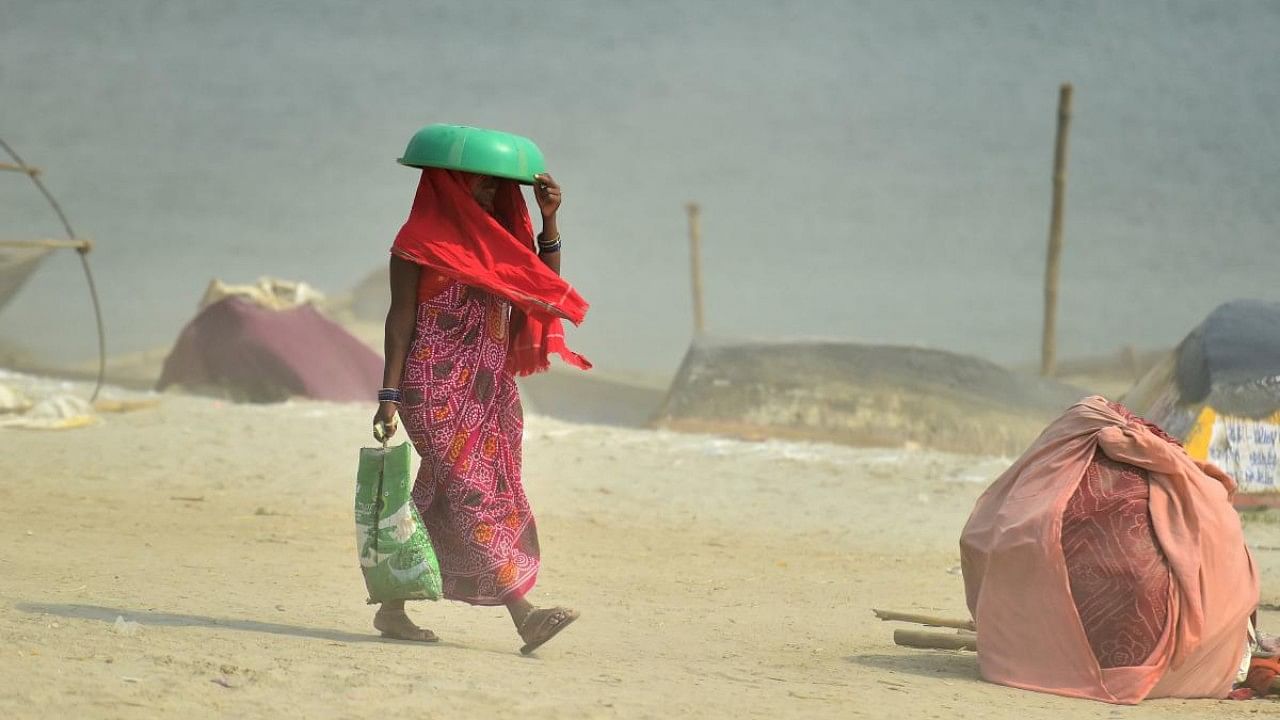
Since the beginning of March, days are getting hotter in India this summer and the heatwaves across the country are expected to stretch into early next month.
Northwest and central India experienced their hottest April in 122 years with average maximum temperatures reaching 35.9 and 37.78 degrees Celsius respectively, the weather office said on Saturday.
Here’s an analysis of the current situation of the Indian summer 2022:
So, what is the heat condition?
Banda in east Uttar Pradesh has logged a record high of 47.4 degrees Celsius on Friday while places like Allahabad, Jhansi, Sports Complex, Ganganagar, Nowgong, and Chandrapur have all breaches the 46-degree Celsius mark.
Meanwhile, Gurugram recorded an all-time high of 45.9 degrees Celsius and Delhi's Safdarjung Observatory recorded a maximum temperature of 43.5 degrees Celsius for the second day on the trot.
Vidarbha in Maharashtra and west Rajasthan have consistently reported maximum temperatures in the range of 40 degrees Celsius to 45 degrees Celsius for the past two months.
According to an analysis by green think tank Centre for Science and Environment, the early heatwaves that began on March 11 have impacted 15 Indian states and union territories (as of April 24).
An 'orange alert' has been issued for Haryana, Punjab, Delhi, Uttar Pradesh, Rajasthan, Madhya Pradesh, Jharkhand, and the Vidarbha region of Maharashtra for Saturday.
When is a heatwave declared?
A heatwave is declared when the maximum temperature is over 40 degrees Celsius and at least 4.5 notches above normal. A severe heatwave is declared if the departure from normal temperature is more than 6.4 notches, according to the IMD.
Based on absolute recorded temperatures, a heatwave is declared when an area logs a maximum temperature of 45 degrees Celsius.
A severe heatwave is declared if the maximum temperature crosses the 47-degree Celsius mark.
What is the reason behind the current heatwave in India?
Weather experts have attributed the high temperature across the country to the absence of periodic light rainfall and thundershowers, typical for this time of the year, due to the lack of active western disturbances.
Northwest India saw at least four western disturbances in March and April, but they were not strong enough to cause a significant change in the weather, said Mahesh Palawat, vice-president (Meteorology and Climate Change), Skymet, a private weather forecasting agency.
The region did not see any significant pre-monsoon activity from March 1 to April 20 which compounded the severity of the successive heatwave spells, he said, adding it had a ripple effect on central India too.
According to D Sivananda Pai of the Kottayam-based Institute for Climate Change Studies, anti-cyclones over western parts of Rajasthan in March and the absence of western disturbances had triggered the early and extreme heatwaves. Anticyclones cause hot and dry weather by sinking winds around high-pressure systems in the atmosphere.
Are these heatwaves an effect of global warming?
After multiple scientists claimed that the current spell of heatwaves in India and Pakistan are due to climate change, the World Meteorological Organization (WMO) said it would be premature to attribute it solely to climate change.
In a statement issued on Friday night, the WMO said: "It is premature to attribute the extreme heat in India and Pakistan solely to climate change. However, it is consistent with what we expect in a changing climate. Heatwaves are more frequent and more intense and now start earlier than they did in the past.”
What to expect next in 2022’s summer in India?
Addressing a press conference, IMD Director General Mrutyunjay Mohapatra said northwest and west central parts of the country - Gujarat, Rajasthan, Punjab and Haryana - will continue to experience above normal temperatures in May as well.
Nights would be warmer in May in most parts of the country, except some regions of south peninsular India, Mohapatra said.
However, giving some respite, “the heatwave is expected to abate from Monday under the influence of a western disturbance, which is likely to affect northwest India from the night of May 1,” he said.
Rajasthan, Delhi, Punjab and Haryana may witness light rainfall and thunderstorms between May 2 and May 4. The maximum temperatures will be between 36 degrees Celsius and 39 degrees Celsius, senior scientist R K Jenamani said.
Check out the latest videos from DH: